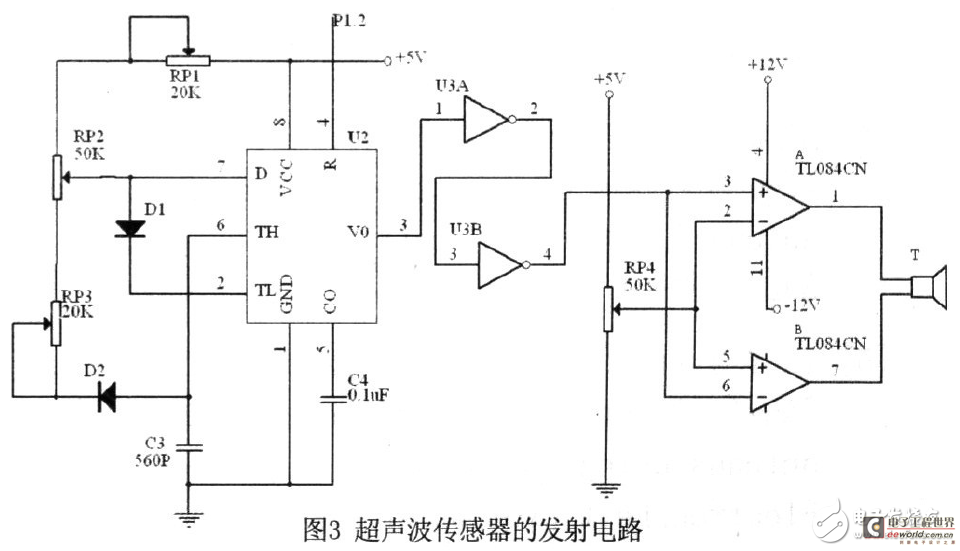单片机模拟电路设计:传感器信号处理与放大:掌握单片机模拟电路设计,处理传感器信号,打造高精度数据采集系统
发布时间: 2024-07-11 19:44:15 阅读量: 100 订阅数: 36 


基于单片机的高精度海量数据采集与存储系统

# 1. 单片机模拟电路设计概述**
模拟电路设计是单片机系统中至关重要的组成部分,负责处理来自传感器和其他模拟设备的信号。本章将概述单片机模拟电路设计的概念和基本原理,为后续章节的深入探讨奠定基础。
模拟电路设计涉及处理连续变化的信号,这些信号代表现实世界的物理量,如温度、压力和位置。单片机中的模拟电路通常包括传感器信号处理、信号放大和模拟信号采集等功能。
通过理解模拟电路设计的原理,工程师可以设计出高效、可靠的单片机系统,满足各种应用需求。
# 2. 传感器信号处理**
传感器信号处理是单片机模拟电路设计中至关重要的环节,其目的在于将传感器输出的原始信号转换成单片机能够处理的数字信号。本章节将深入探讨传感器信号处理技术,包括传感器类型、信号特性、信号调理技术等方面。
## 2.1 传感器类型及信号特性
传感器是将物理量或化学量转换成电信号的器件,广泛应用于各种工业和民用领域。根据传感原理,传感器可分为以下几类:
- **电阻式传感器:**利用电阻的变化来检测物理量,如压力传感器、温度传感器等。
- **电容式传感器:**利用电容的变化来检测物理量,如湿度传感器、位移传感器等。
- **电感式传感器:**利用电感的变化来检测物理量,如流量传感器、接近传感器等。
- **压电式传感器:**利用压电效应将物理量转换成电信号,如振动传感器、加速度传感器等。
不同类型的传感器具有不同的信号特性,如信号幅度、频率、相位等。了解信号特性对于后续的信号调理至关重要。
## 2.2 信号调理技术
信号调理技术是指对传感器输出信号进行处理,使其符合单片机处理要求的技术。常见的信号调理技术包括滤波、放大和转换。
### 2.2.1 滤波
滤波技术用于去除传感器信号中的噪声和干扰。常用的滤波器类型包括:
- **低通滤波器:**滤除高频噪声,保留低频信号。
- **高通滤波器:**滤除低频噪声,保留高频信号。
- **带通滤波器:**滤除特定频率范围内的噪声,保留其他频率信号。
- **带阻滤波器:**滤除特定频率范围内的信号,保留其他频率信号。
### 2.2.2 放大
放大技术用于增强传感器信号的幅度,使其达到单片机处理要求。常用的放大器类型包括:
- **反相放大器:**将输入信号反相放大,放大倍数由反馈电阻比决定。
- **同相放大器:**将输入信号同相放大,放大倍数由反馈电阻比决定。
- **仪表放大器:**高精度、高输入阻抗的放大器,常用于放大微弱信号。
### 2.2.3 转换
转换技术用于将传感器信号从模拟信号转换成数字信号,以便单片机处理。常用的转换器类型包括:
- **模数转换器(ADC):**将模拟信号转换成数字信号,分辨率和采样率是关键参数。
- **数模转换器(DAC):**将数字信号转换成模拟信号,分辨率和更新率是关键参数。
# 3.1 放大器类型及特性
放大器是一种电子电路,用于增加信号的幅度。根据其输入和输出信号之间的相位关系,放大器可以分为反相放大器和同相放大器。
**反相放大器**
反相放大器将输入信号反相输出,即输出信号与输入信号相位差为 180°。反相放大器通常使用运算放大器 (Op-Amp) 构建,其增益由反馈电阻的比值决定。
**同相放大器**
同相放大器将输入信号同相输出,即输出信号与输入信号相位相同。同相放大器也通常使用运算放大器构建,其增益由反馈电阻和输入电阻的比值决定。
**仪表放大器**
仪表放大器是一种高精度、高共模抑制比的放大器,专门用于测量小信号。仪表放大器通常由三个运算放大器组成,其增益由外部电阻决定。
下表总结了不同类型放大器的特性:
| 放大器类型 | 相位关系 | 增益 | 应用 |
|---|---|---|---|
| 反相放大器 | 反相 | 反馈电阻比值 | 信号反转、电压跟随 |
| 同相放大器 | 同相 | 反馈电阻与输入电阻比值 | 信号放大、缓冲 |
| 仪表放大器 | 同相 | 外部电阻 | 高精度测量、共模抑制 |
### 3.2 放大器电路设计
放大器电路设计涉及选择合适的放大器类型、确定增益和设计反馈网络。
**反相放大器电路**
反相放大器的电路图如下:
```
+---/\/\/\/--- Vin
| |
| |
| |
| |
| |
| |
| |
| |
| |
| |
| |
| |
| |
| |
| |
| |
| |
| |
| |
| |
| |
| |
| |
| |
| |
| |
| |
| |
| |
| |
| |
| |
| |
| |
| |
| |
| |
| |
| |
| |
| |
| |
| |
| |
| |
| |
| |
| |
| |
| |
| |
| |
| |
| |
| |
| |
| |
| |
| |
| |
| |
| |
| |
| |
| |
| |
| |
```
0
0





